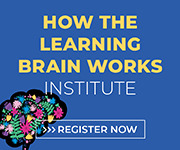How Learning Works
A Playbook
- John Almarode - James Madison University, USA
- Douglas Fisher - San Diego State University, USA
- Nancy Frey - San Diego State University, USA
Translate the science of learning into strategies for maximum learning impact in your classroom.
The content, skills, and understandings students need to learn today are as diverse, complex, and multidimensional as the students in our classrooms. How can educators best create the learning experiences students need to truly learn?
How Learning Works: A Playbook unpacks the science of how students learn and translates that knowledge into promising principles or practices that can be implemented in the classroom or utilized by students on their own learning journey. Designed to help educators create learning experiences that better align with how learning works, each module in this playbook is grounded in research and features prompts, tools, practice exercises, and discussion strategies that help teachers to
- Describe what is meant by learning in the local context of your classroom, including identifying any barriers to learning.
- Adapt promising principles and practices to meet the specific needs of your students—particularly regarding motivation, attention, encoding, retrieval and practice, cognitive load and memory, productive struggle, and feedback.
- Translate research on learning into learning strategies that accelerate learning and build students’ capacity to take ownership of their own learning—such as summarizing, spaced practice, interleaved practice, elaborate interrogation, and transfer strategies.
- Generate and gather evidence of impact by engaging students in reciprocal teaching and effective feedback on learning.
Free resources
John Almarode and Nancy Frey: A Look at How Learning Works
John Almarode and Nancy Frey, co-authors of How Learning Works, present an overview of the science of learning and how to translate that science into classroom practices that increase student learning.
Module 3 - What Are The Barriers to Learning?
In Module 3, the authors describe the challenges to acquisition, consolidation, and storage of learning.
Learning Myths
Read the list of beliefs and misconceptions about learning that are not supported by research and may actually interfere with our support of learning acquisition, consolidation, and long-term storate. Do you think the statements are true or false? Check your answers!
Module 5 - Promising Principle 1: Motivation
In Module 5 from How Learning Works, the authors discuss the first of their "promising principles": Motivation. In this module, they bridge the gap between ideas and theories around motivation and the application of these strategies in the classroom.
How Learning Works Introduction
In this introduction to How Learning Works, the authors discuss the purpose and how to use their playbook, plus give a brief overview of how learning truly works—not by chance, but by design.
Easy to understand, yet covers many important concepts. Spiral binding constitutes its use over many years, hopefully.

